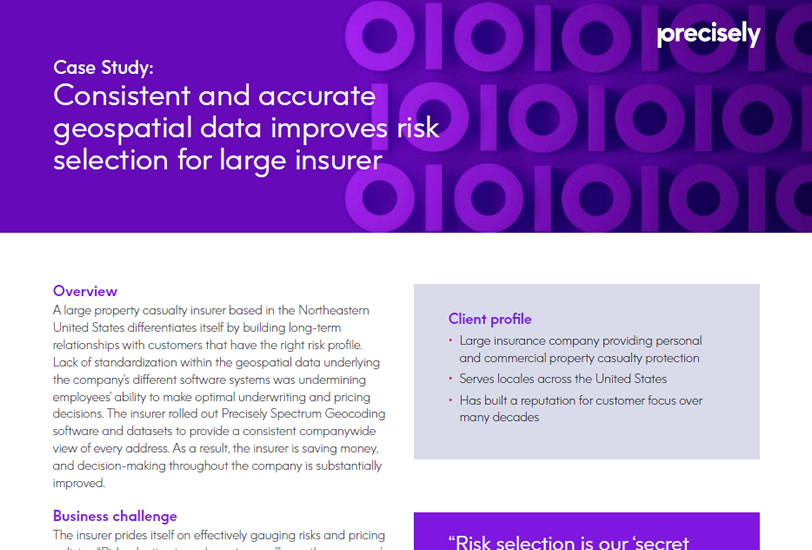Customer Story
Consistent and Accurate Geospatial Data Improves Risk Selection for Large Insurer
A large property casualty insurer based in the Northeastern United States differentiates itself by building long-term relationships with customers that have the right risk profile. Lack of standardization within the geospatial data underlying the company’s different software systems was undermining employees’ ability to make optimal underwriting and pricing decisions. The insurer rolled out Precisely Spectrum Geocoding software and datasets to provide a consistent companywide view of every address. As a result, the insurer is saving money, and decision-making throughout the company is substantially improved.
Geospatial data is standardized across the company
The insurer prides itself on effectively gauging risks and pricing policies. “Risk selection is our ‘secret sauce,’” says the company’s geospatial capability owner. “We need to know exactly where each property is located and how it relates to different risks. We use that information to charge each policyholder a fair price.” The company’s legacy technology environment made risk selection more difficult. Different groups within the insurance company were utilizing a variety of geospatial tools, with no companywide address scrubbing. A claims analyst might enter a slightly different address for a property than the agent who wrote the policy. Minor address variations like misspellings or abbreviations were causing a lot of confusion. Worse, the insurer’s personal and commercial lines of business did not use the same reference data for geocoding. This led to small differences in the information used to price policies and undermined the ability to develop an aggregated view of organizational risk.
Within one building in New York, the company’s different divisions might insure a small retail business on the ground floor, a large company with a few floors of offices higher up, and then a penthouse residence. The insurer needed to understand its aggregated risk across the entire structure so that when a prospective new customer requested a quote for a property in that building, it was clear at a glance how much business the company had already underwritten there.
